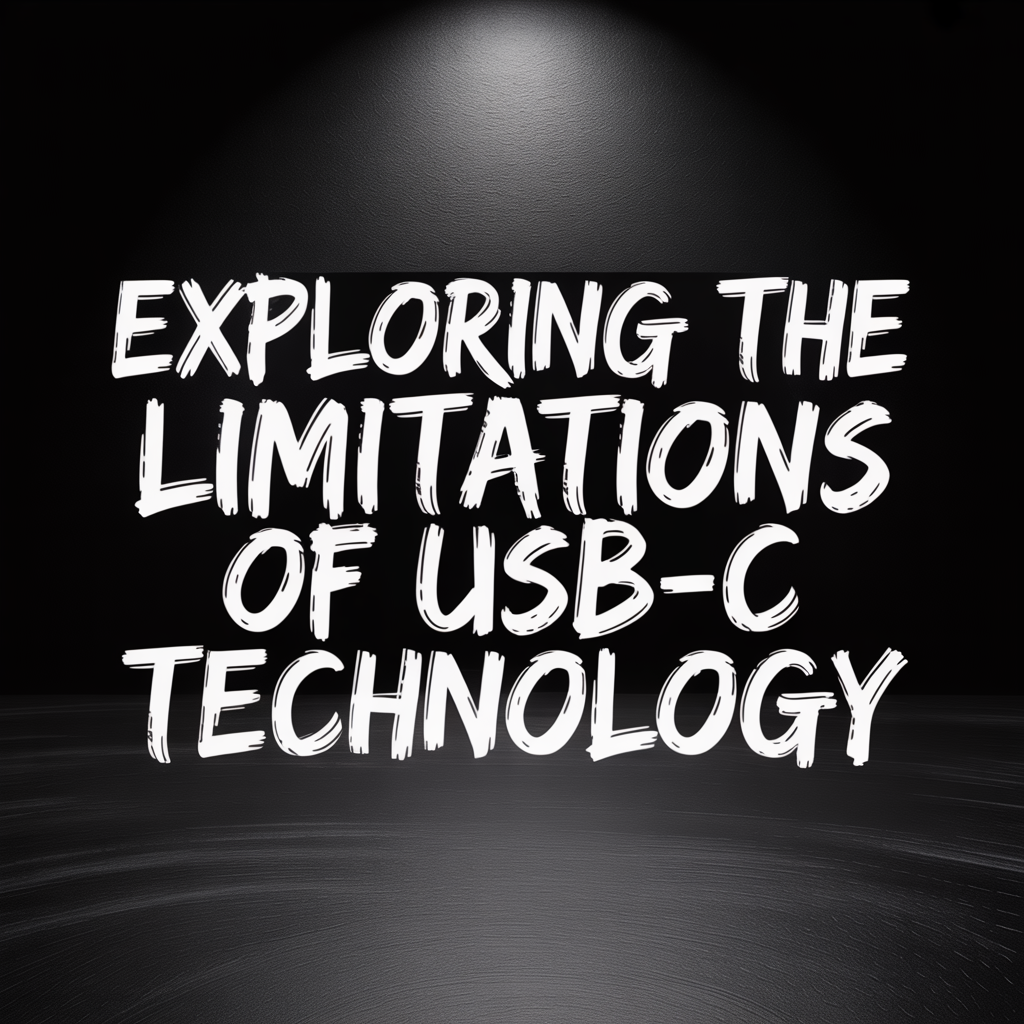USB-C is the undisputed champion of modern connectivity. It’s the sleek, reversible connector that promised a utopian future with one cable to rule them all. For the most part, it has delivered. This tiny powerhouse can charge your laptop, transfer massive files in a flash, and stream 4K video, often all at the same time. But let’s be honest, the USB-C revolution hasn’t been entirely seamless. It's a bit like a superhero who is incredibly powerful but also has a few confusing and frustrating weaknesses.
While we celebrate its versatility, it’s time to have a frank discussion about the dark side of USB-C. The reality is a confusing landscape of different standards, questionable-quality cables, and compatibility chaos that can leave even tech-savvy users scratching their heads. This guide will shine a light on the limitations of USB-C technology and, more importantly, show you how to navigate them like a pro so you can enjoy the benefits without the headaches.
The Great Deception: Not All USB-C is Created Equal
The single biggest source of confusion is the fact that while the physical connector looks the same, what’s happening on the inside can vary wildly. The USB-C port is just the shape; the technology it supports—its "protocol"—is what determines its capabilities. This has created a alphabet soup of standards that can be incredibly difficult to decipher.
The Speed Spectrum
You might have a USB-C port that supports blazing-fast Thunderbolt 4 (up to 40Gbps), or you might have one that’s secretly running on ancient USB 2.0 technology (a measly 480Mbps). That’s a speed difference of over 80 times! You could buy a super-fast external SSD, plug it into your laptop's USB-C port, and be stuck with snail-like transfer speeds simply because the port itself doesn't support the faster protocol.
The Power Puzzle
Power Delivery (PD) is the technology that allows USB-C to charge high-power devices like laptops. But again, not all ports or chargers support it equally. A USB-C charger might deliver 15W, 45W, or over 100W of power. If you plug your 65W laptop into a 30W charger, it will charge incredibly slowly or, if you're using it, might even continue to lose battery. The device, cable, and charger must all speak the same "power language" to achieve the fastest charging speeds.
The Video Conundrum
The ability to transmit video over USB-C is one of its best features, allowing you to connect to a monitor with a single cable. However, this feature, known as DisplayPort Alternate Mode, isn’t mandatory. Many devices, especially cheaper laptops and smartphones, have USB-C ports that are for charging and data only. You might buy a shiny new USB-C monitor only to find your laptop’s port can't send a video signal to it.
The Wild West of Cable Quality
With the universal adoption of USB-C, the market has been flooded with a dizzying array of cables from countless manufacturers. While this gives us plenty of choices, it has also led to a serious quality control problem. A cheap, poorly made USB-C cable isn't just a bad purchase; it can be a dangerous one.
What's at Stake with a Bad Cable?
A non-compliant cable can cause a host of problems. At best, it might lead to slow charging or unreliable data transfers. At worst, it can deliver the wrong voltage and permanently damage the charging port or battery of your expensive devices. Early in the USB-C transition, there were numerous reports of cheap cables frying laptops and smartphones.
The Challenge of Standardization
While organizations like the USB Implementers Forum (USB-IF) provide certification for products that meet safety and performance standards, this certification is not mandatory. Many manufacturers skip this expensive testing process, releasing products into the wild that may or may not be compliant. For the average consumer, it's nearly impossible to tell a high-quality, certified cable from a potentially dangerous dud just by looking at it.
Navigating the Limitations: How to Be a Smart User
So, are we doomed to live in a state of perpetual USB-C confusion? Not at all. With a bit of knowledge and the right approach, you can easily sidestep these limitations.
1. Know Your Ports
Before you buy any new accessory, take a moment to understand the capabilities of your devices. Look up the tech specs of your laptop, smartphone, or tablet on the manufacturer’s website. Pay close attention to the details of the USB-C port. Does it support Thunderbolt? What version of USB does it use? Does it support DisplayPort Alternate Mode? Knowing this information will empower you to buy accessories that are actually compatible with your gear.
2. Prioritize Quality Over Price
When it comes to USB-C accessories, this is the golden rule. Avoid the temptation of a suspiciously cheap cable from a no-name brand. Instead, invest in products from reputable companies known for their quality and safety standards. Think of it this way: is it worth risking your $1,000 smartphone to save $10 on a cable? The answer is always no.
3. Look for Clear Labeling
In an effort to reduce confusion, the USB-IF has introduced new labeling for certified cables and ports that clearly indicates their data transfer speed and power capabilities. When shopping, look for packaging that explicitly states the performance you can expect (e.g., "40Gbps" or "100W").
The Perfect Gift: Practicality and Peace of Mind
Searching for useful USB-C gift ideas? A high-quality, certified accessory from a trusted brand is a fantastic choice. It’s a practical gift that solves a real-world problem, offering the recipient faster, safer, and more reliable performance for the devices they use every day. It's a gift that provides both convenience and peace of mind.
RND Power Solutions: Your Antidote to USB-C Chaos
Navigating the confusing world of USB-C is much easier when you can trust the brand you’re buying from. RND Power Solutions was built on a foundation of quality, reliability, and safety, making them the perfect choice for all your USB-C needs.
RND’s USB-C product collection is meticulously engineered to be fully compliant with the latest standards, ensuring you get the performance and safety you expect.
- Verified Performance: RND’s accessories are designed to deliver on their promises. Their cables support fast data transfer and high-power delivery, and their chargers are optimized to provide a safe and efficient charge every time.
- Durability by Design: Fed up with frayed cables? RND uses high-quality materials and reinforced construction to ensure their products can withstand the demands of daily use.
- Guaranteed Compatibility and Safety: RND’s chargers and power stations feature advanced safety protocols, including over-voltage and over-current protection, to protect your valuable devices. Each product is tested to ensure it works seamlessly with a wide range of devices.
Don't let the limitations of USB-C technology frustrate you. By making informed choices and investing in quality gear, you can build a reliable and powerful tech setup.
Ready to eliminate the guesswork and charge with confidence? Explore the full collection of high-quality USB-C accessories at RND Power Solutions today!
http://www.rndaccessories.com/collections/usb-c






